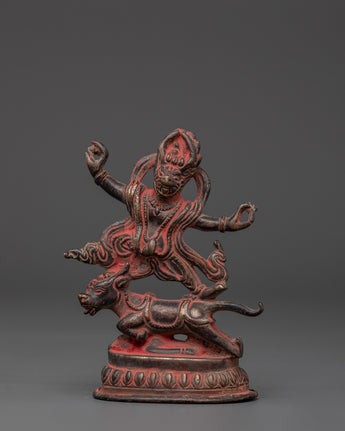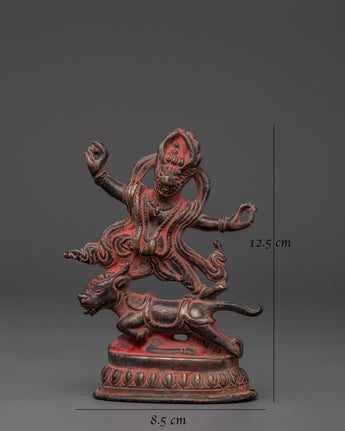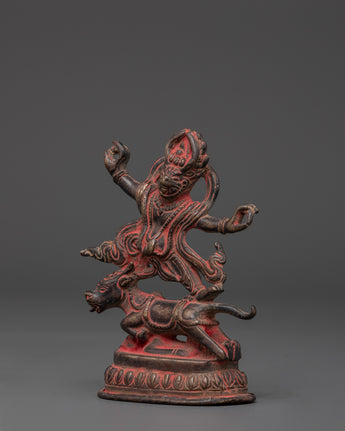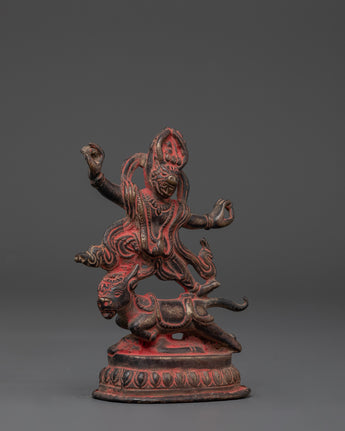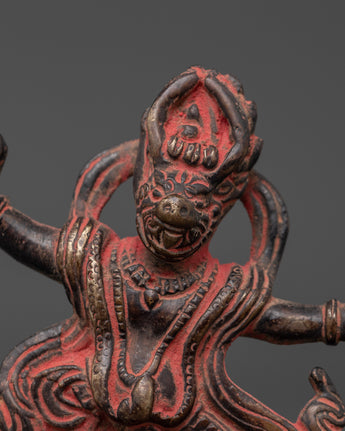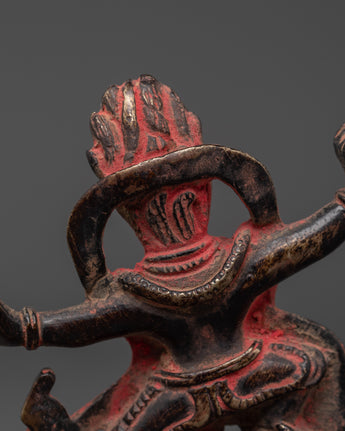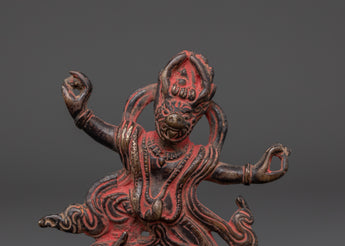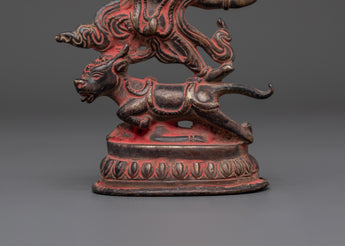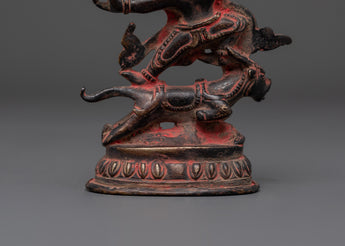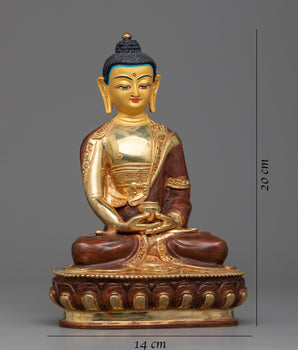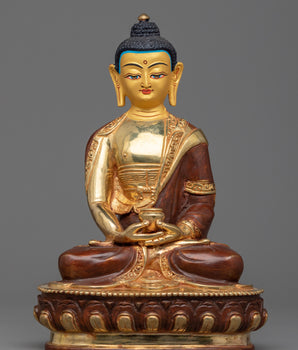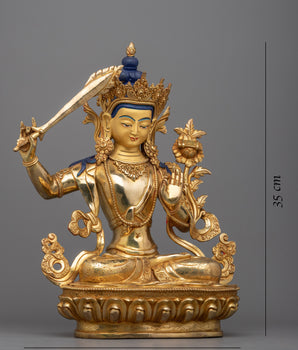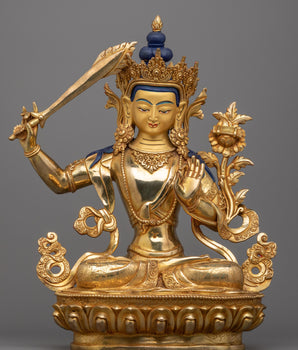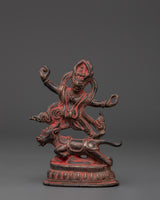
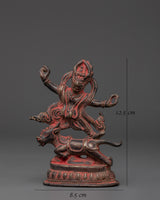
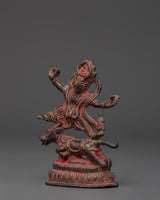
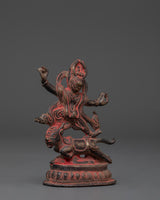
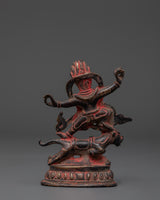
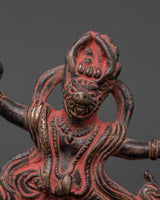
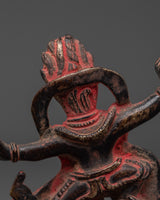
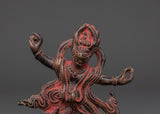
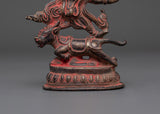
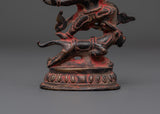
Sacred Yamantaka Sculpture | Spiritual Idol for Meditation

100% AUTHENTIC

HANDMADE

FREE SHIPPING
The Sacred Yamantaka Sculpture | A Powerful Symbol of Liberation
-------------------------------------------
Size: 12.5cm (Height) x 8.5cm (Width)
Weight: 0.49kg
Materials: Copper, Antique Finishing
-------------------------------------------
About Our Statue:
The Sacred Yamantaka Sculpture is a remarkable representation of one of the most revered deities in Tibetan Buddhism. Standing at 12.5cm in height and 8.5cm in width, this striking statue is the perfect size to add to your altar, meditation space, or display in any room. Yamantaka, the "Conqueror of Death," is known for his powerful ability to transform negative energies and remove obstacles in one's spiritual journey. This Yamantaka figurine symbolizes protection, strength, and the ultimate victory over ignorance and fear, making it an essential spiritual tool for practitioners seeking transformation and liberation.
Weighing 0.49kg, this Sacred Yamantaka sculpture combines artistic craftsmanship with deep spiritual symbolism. Crafted from copper with an antique finish, the 12.5cm figure captures Yamantaka’s fierce, dynamic form as a powerful symbol of triumph over death and ignorance. Its striking presence enhances any space, from intimate meditation tables to altar displays, inviting protection and inner strength. This statue not only beautifies your environment but also serves as a daily reminder of wisdom’s transformative power, making it an essential addition for those seeking spiritual growth and focused meditation.
Introduction to Yamantaka
The Yamantaka statue is shown in various ways, one of which is Yamantaka Ekavira, which means "lone hero." He has a bull's or buffalo's head with long horns as the center head, among many other features. There are eight primary heads, with the Bodhisattva Manjushri's little crowned head at the pinnacle. Yamantaka was dressed in an elephant-skin robe, a garland of freshly cut human skulls, snakes, interwoven bone ornament bracelets, necklaces, and a girdle. Except for his adornments, he is naked. A flaming halo is behind him, and his erect phallus has a crimson tip. He wields a chopping knife (Kartika) in his primary hands, symbolizing his power to sever the root of illusion.
How do you take care of your statues?
• Place them at room temperature, avoiding direct sunlight.
• Make sure that the area where your statue is placed is entirely free of moisture and dust.
• Place it at the highest place on your altar after being consecrated by a Lama/monks. The best practice is to keep them covered inside a glass cabinet.
• Do not use your bare hands or any objects with a rough surface to wipe the face. Directly touching objects with the bare hand can smudge the face, leaving scratches.


